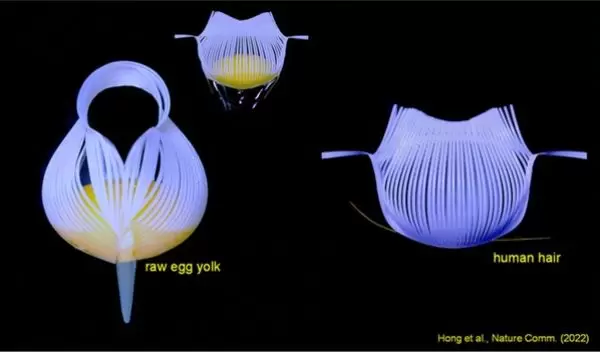
Researchers create grippers capable of grabbing and lifting delicate objects
U.S. National Science Foundation engineers based at North Carolina State University have developed flexible robotic grippers that can lift delicate items without damage and have the precision to grab a single strand of hair. The breakthrough has a host of applications for soft robotics, biomedical technologies and wound care, the researchers said. The team published its results in Nature Communications.
Using kirigami, an art that involves folding and cutting two-dimensional sheets of material to form three-dimensional shapes, the researchers developed a technique that involves cutting parallel slits across the material to create a three-dimensional structure.
"We have defined and demonstrated a model that allows users to work backward," said Yaoye Hong, one of the authors of the paper. "If users know what curved, 3D structure they need, they can use our approach to determine the boundary shape and pattern of slits in the 2D material."
"Our technique is simpler than previous techniques for converting 2D materials into curved 3D structures and allows designers to create customized structures from 2D materials,” said co-author Jie Yin. “Our technique can be used to create tools capable of grasping and moving even extremely fragile objects.
“Our grippers essentially surround an object and then lift it – similar to the way we cup our hands around an object. This allows us to 'grip' and move even delicate objects without sacrificing precision. Think of smart bandages or monitoring devices capable of bending and moving with your knee or elbow."
The researchers are now integrating this technique into soft robotics technologies to address industrial challenges. They’re also exploring how this technique could be used to create devices that could be used to apply warmth to the human knee for therapeutic purposes.
"This is a great example of how theoretical mechanics research can be used to push the geometrical and functional bounds of what we think might be possible in morphing engineering materials,” said Nakhiah Goulbourne, a program director in NSF’s Directorate for Engineering.
